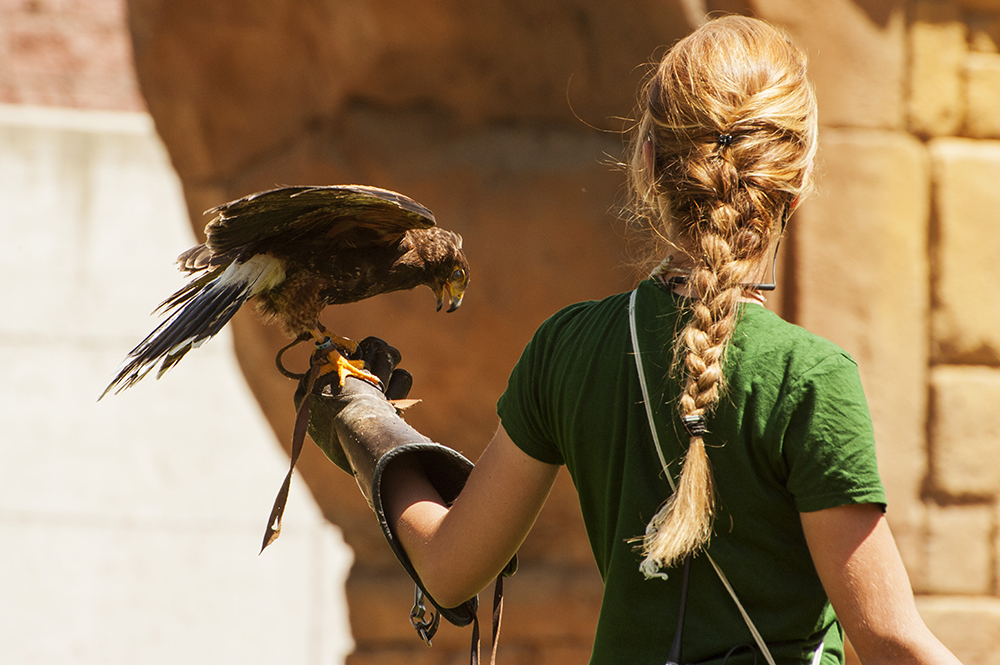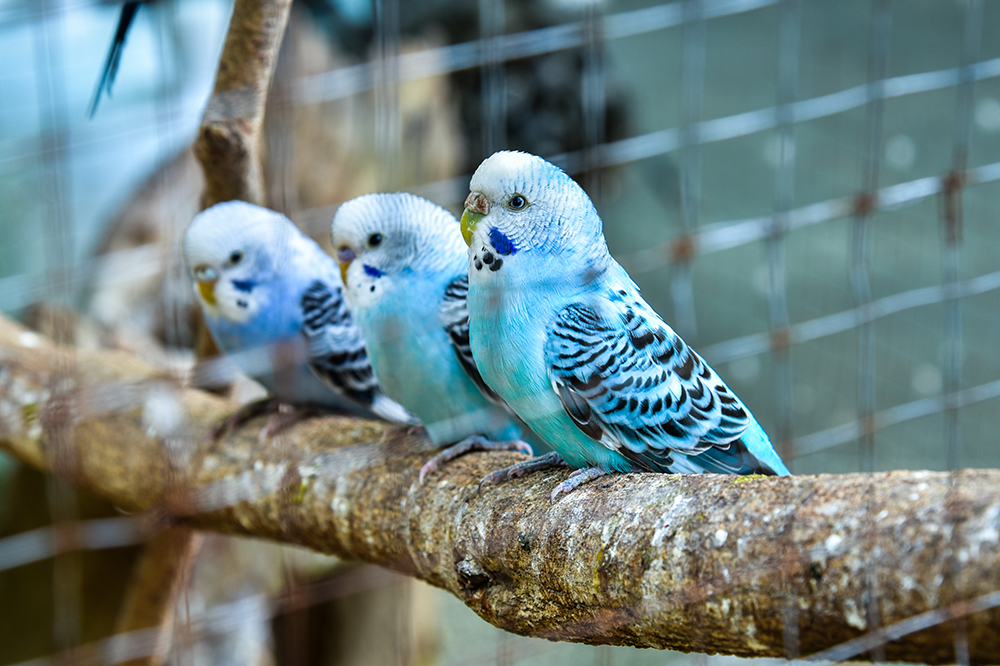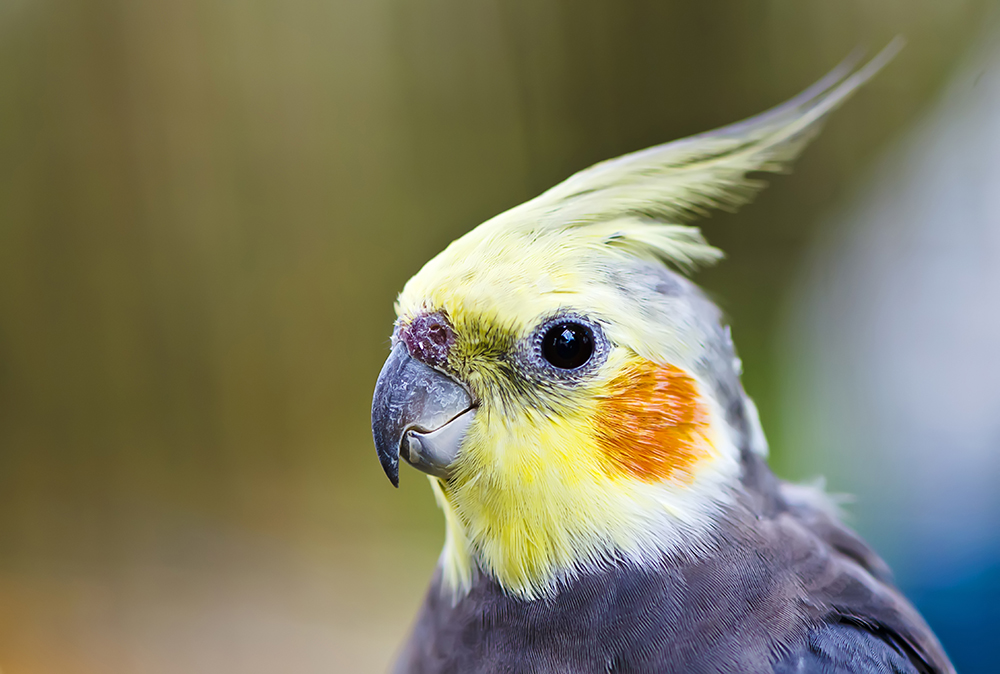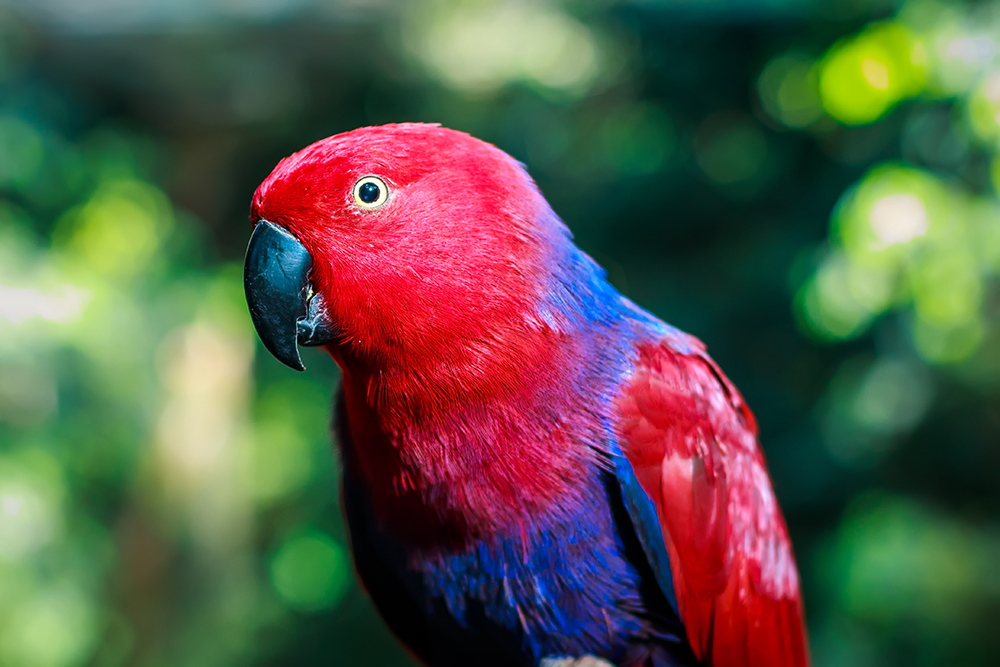
Bird Finders Guide
Keeping Birds for Pleasure and Preservation
Aviculture is defined as the keeping and breeding of birds. Dr. Jean Delacour, the most dedicated, influential, and highly respected individual in the modern history of aviculture defined it precisely: "Aviculture - The worldwide hobby of keeping and breeding numerous species of wild birds in captivity to maintain their numerical status in nature with a view of forestalling their extinction by supplying aviary raised stock."
 Since the earliest times in man's history, birds were kept for food and eggs -- or hunting! Since the earliest times in man's history, birds were kept for food and eggs -- or hunting!
|
As with the keeping and breeding of many animals, birds have been kept by humans since the early days of man. While chickens and waterfowl were primarily kept for food and eggs, other types of birds were kept for other purposes, from hawks for hunting to singing birds for household pets. Other birds were used for communication, such as the homing pigeon. In the Far East, especially China, many types of pigeons were kept for their beauty. African grey parrots and Indian ringneck parrots were commonly kept as pets in the Middle Ages in the Middle Eastern Muslim countries. Once the Europeans came to the New World, they took back to Europe many of the different parrot species found in Central and South America. In 1493, Columbus brought a pair of Cuban Amazons to Queen Isabella of Spain.
The United States history of the pets of our Presidents indicates many kept parrots. Martha Washington had a pet Amazon parrot as well as a cockatoo, as well as other parrots. See: www.mountvernon.org/digital-encyclopedia/article/birds/ and https://lafeber.com/pet-birds/presidents-their-parrots/ and www.plannedparrothood.com/famousowners.html for information on many famous people who kept parrots.
 Budgerigars are small birds with big personalities. They have long been a favorite pet. Budgerigars are small birds with big personalities. They have long been a favorite pet.
|
From early times in the US, canaries were kept. By the nineteen hundreds, budgerigars and finches were popular. During the 1950’s one could order a green parrot from the Sears catalog, an Amazon parrot from Central or South America or a great billed parrot from the Philippines. However, the average citizen in the US did not own a parrot in the fifties and sixties. But, they might own a budgerigar or a canary or a finch, as these were readily available at the local Woolworth's dime store. (Note: it is illegal for US citizens to keep native bird species in captivity. That is why pet birds, from canaries to parrots, which are non-native species, are legal to own.)
The forests of many countries were available for exploration during the 1960’s and 70’s, due to the removal of trees for lumber or access into the forested areas for minerals or other resources. The new roadways and transport methods opened up these habitats for the capture and transport of wild birds and animals for the pet trade, as well as removal of all sorts of plant life for the horticulturists seeking exotic species. With the expansion of international travel by plane, wild birds and animals could successfully and quickly be transported to other countries.
Once these wild birds and animals were commonly sold in other countries, many who were interested in keeping them and breeding them took advantage of the opportunity and set up breeding facilities during the seventies and early eighties. Today what we have available in terms of parrots and other non-native bird species are very likely the many generations removed offspring of those early imports. (Importation of parrots into the US was ended in 1992 with the passage of the Wild Bird Conservation Act. A few exceptions with appropriate permits can be imported, but those are few in number, difficult to obtain, and primarily for bringing in one’s personal pets or birds for zoo exhibits.)
Who are the aviculturists in the US? There are bird keepers and exhibitors and bird trainers, as well as bird breeders. Some may keep exotic birds at facilities which are designed to exhibit birds, such as zoos. Bird trainers are professionals who work with parrots and other species and/or train them to perform acts, from flying to talking. These trained birds perform at special events or at locations such as Busch Gardens. Bird breeders or propagators generally have a facility which is designed to provide appropriate housing for breeding pairs and their young. Some birds are raised to be future breeding birds and others are raised to be pets or to be aviary birds. Birds may be raised at small facilities such as in homes, or in large facilities in specially designed buildings or outdoor aviaries, depending on the local climate.
However, most pet birds are those kept by individual pet owners. According to the American Veterinary Medical Association (the AVMA), there are 8,300,000 million pet birds in homes. The majority are budgerigars and cockatiels, which are small parrots. A parrot is defined as a bird with a curved beak, designed to use power when chewing wood; the beak is an excellent tool used to crack and open seeds, hard nuts and to create nests in tree trunks.
 There are over 8.3 million pet birds in US homes, many of them cockatiels. There are over 8.3 million pet birds in US homes, many of them cockatiels.
|
Sometimes pet owners decide to become bird breeders and start raising birds. However, the basic focus of a pet owner towards their birds is often an emotional one, considering their bird to be a member of their family. This is quite different from that of most bird breeders who do feel emotion for their birds, but their focus is more technical and focused on the details of appropriate species care.
Note: keeping native species is illegal in the US There are birds in our lands that are not native species, such as English sparrows, starlings, pigeons, and Ring necked pheasants; all have been introduced into the US When someone finds a hurt bird or baby bird, those birds should be taken to the nearest official rehabilitation center, because it is illegal to keep them. Most veterinarians know the location of local wildlife rehabilitation centers.
 This guide presented as part of NAIA's mission to promote and preserve domestic animals. This guide presented as part of NAIA's mission to promote and preserve domestic animals.
|
In 1992 the Wild Bird Conservation Act was passed by Congress and signed by the President. This law prevents the importation of most parrot species, unless one has a special import permit issued by the US Fish and Wildlife Service. That includes zoos or any other entities. Imported birds are required to go through 30 days of quarantine and be tested for several diseases. At this time, in 2016, most of the birds being imported are captive raised birds from other countries, such as canaries, cockatiels and budgerigars, as well as some finches and other non-parrot species which are not covered under the W.B.C.A. Other laws may apply to native and non-native species, such as the Migratory Bird Act.
When choosing a pet bird, there are several considerations that a new owner should consider so that the species is a good fit for the person and their family and lifestyle. Following is a list of considerations:
 Eclectus Parrots are intelligent and calm, but easily upset by unexpected noises and interruptions; doing your research and acquiring from a reputable source will help you provide a great life for your pet! Eclectus Parrots are intelligent and calm, but easily upset by unexpected noises and interruptions; doing your research and acquiring from a reputable source will help you provide a great life for your pet!
|
In summary, there are many pet birds of various species kept in homes in the US. Bird owners enjoy the beauty, charm, intelligence, singing, and talking ability of their birds. Modern veterinary medicine provides bird owners with options for maintaining the health of their birds, and specialty companies make cages, toys, special foods, and other supplies for providing proper care. Information on specific species is available both from national bird organizations and specialty Internet groups. Doing some research before deciding on a pet bird is recommended, as there are so many choices and the new bird owner will want to make the choice that best suits them.
 Discover Animals is a web-based educational resource offered by the NAIA
Discover Animals is a web-based educational resource offered by the NAIA